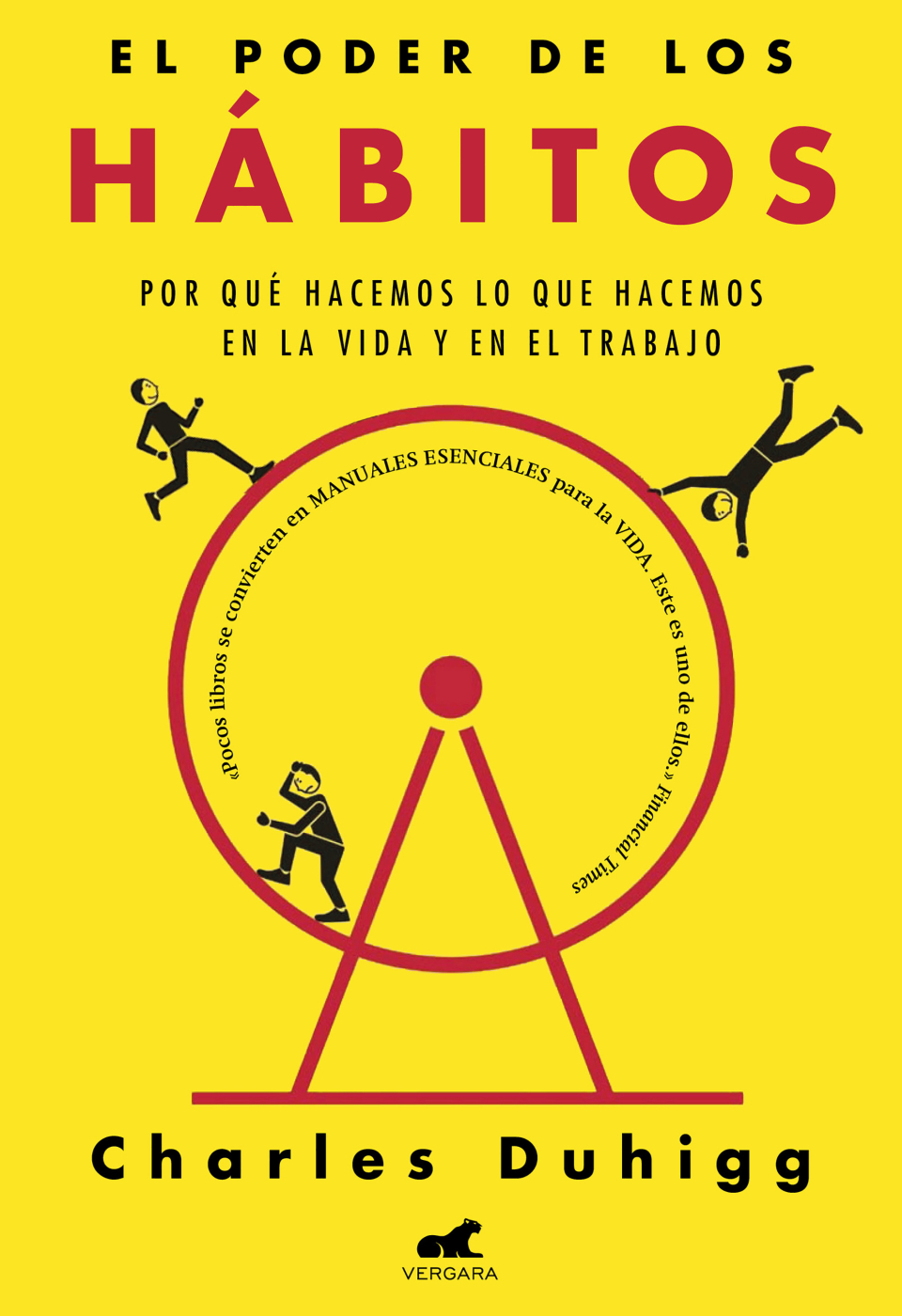Book: "The Power of Habits".
Eugene Pauly was a 71-year-old man who had lost his medial temporal lobe due to viral encephalitis. The rest of his brain remained functioning perfectly and he had no problem remembering events in his life that occurred before 1960, however, he had total loss of his short term memory, he could not retain situations or actions performed even if they had happened a minute ago; he could repeat actions over and over again without being aware that he was repeating them. Eugene could not keep track of where his bedroom was or the most important places in his house because of his illness. However, one day something unexpected happened: Eugene disappeared from the house, he had gone out alone to walk the streets and his wife was very worried fearing that he had gotten lost, however, to everyone's surprise, he appeared 15 minutes later after having taken the walk by himself, without his wife's company. Eugene didn't even know his way around the house, but he went for a walk and returned home safely. This behavior proved what many scientists suspected, but had never been able to prove, that "habits are formed and operate separately from the memory part of our brain.
Our brain is constantly looking for ways to save effort and recording sequences of actions to turn them into automatic routines, which is very useful in situations such as parking a car, taking a bath in the morning, eating breakfast, going to work, ... These automatic routines help us save time, however, they can also be harmful when it comes to negative habits that we acquire and begin to develop unconsciously.
The process of habit formation and consolidation is a three-step loop:
- The signal: this is the trigger that gives the order to our brain to perform a certain action.
- The routine: corresponds to the performance of the action.
- He reward: it is the one that informs our brain if it is worth remembering this loop for future occasions.
Let's see it with an example: we are at home, we do not have many things to do and we are bored, boredom is the signal that tells your brain that you need to do a certain action (watch TV, surf the internet, go out to the movies or any other activity that can fade the boredom you feel) and finally the reward that in this case is better for your mood. If you repeat these actions continuously you will have formed a habit in your life, the drawback is that our brain distinguishes between good and bad habits, if your decision to change your mood has been to watch TV or play video games you will form a negative habit in your life and every time you feel bored you will waste your time in activities that do not contribute anything to your personal development. The good thing about negative habits is that they can be replaced, let's see it again in the loop of the three steps: we can't write the signals and neither the reward, but we can replace the routine if when you feel bored instead of going to watch TV you decide to go for a walk in the park, read a good book or exercise; in this way you will be starting to replace the negative habits in your life.
These routine changes can be applied to many negative habits we have. There are studies that have shown that liquor consumers have been able to replace the routine of drinking alcohol in most occasions, what the person who drank alcohol said is not the fact of feeling dizzy but to have a good conversation or perhaps to find advice to solve their problems or to feel better. A coffee instead of a beer may be the change of routine needed to change a bad habit like that. The key is to begin to recognize that the habit does not work in isolation, but is accompanied by a signal that can be some emotion or perhaps a specific time of day or many other signals that can trigger the routine, which will ultimately provide a reward that can be seen to manifest in many forms. It is interesting to see that we can develop different kinds of habits, but they can also be inculcated by society or by the media.
A very interesting story told in the book is that of Pepsodent toothpaste, which thanks to an advertising campaign led by Claude Hopkins managed to increase the use of toothpaste significantly. At the beginning of the 20th century only 7% of the population used this product and only 10 years later 65% of the population was using toothpaste in daily hygiene. The advertising strategy was focused on seeking a habit, using the three-step loop: the signal was the bacterial plaque on the teeth, the routine was to use Pepsodent to choose to educate and finally the reward was a sparkling white set of teeth. However, it should be noted that to form a habit it is not enough to take these three elements into account, there is another element that is very important, which is the desire to repeat the sequence of actions until the process becomes automatic and habit-forming. But how did Pepsodent manage to make people want to use the product every day? The key was to include in its ingredients citric acid, peppermint oil and other chemicals that, although they did not contribute anything in terms of oral health, provided a tingling sensation and freshness in the mouth, which was largely what users wanted to experience after brushing their teeth.Studies concluded that Pepsodent consumers realized they had forgotten to use it when they noticed the absence of this type of sensation in their mouth, so we can see that Pepsodent was selling a sensation rather than the product itself by offering its product. The population began to desire this sensation, which, together with the three elements mentioned above, ended up forming a habit. It happened first in the USA and over the years it spread all over the world.
This strategy is still used today by creators of video games, mobile applications, TV series,... The same principles are applied to create habits in people, for example, there are carefully designed video games that keep the player expectant (what will I find in the next level?, Will I finish the game?) These are things that keep the user with the desire to play again, to repeat the routine that will eventually end up creating the habit.
And once a habit is formed we begin to act unconsciously, but the interesting thing about this is that, although we do not have the power to change the signals or the reward, we can change our routines that will ultimately change our habit.
And once a habit is formed we begin to act unconsciously, but the interesting thing about this is that while we do not have the power to change the signals or the reward, we can change our routines which will ultimately change our habit.
Fundamental habits
These are habits that help change other habits. A classic example of a fundamental habit is acquiring the habit of exercising, because once acquired we can begin to change our diet and stop smoking, consume less liquor.
These habits apply at the individual level as well as at the company level. The book describes the management of Paul O'Neil, who was in charge of one of the most important aluminum companies in the world, Alcoa Corp. Unlike his predecessors who had focused solely on increasing the organization's net profits, O'neil's approach was to establish industrial safety as a priority in the production plants due to the high accident rate of the company's employees. This approach led the company not only to reduce this indicator, but also to lower production costs, and the company increased its net income by 500% compared to past administrations.
What this shows us is that the simple fact of changing certain aspects that had been overlooked by other managers generated a positive effect in terms of the overall improvement of the company. Looking for these types of habits that create a positive effect and changing other aspects can also be a way to eliminate bad habits gradually.
If you want to know more about our training proposal in aesthetic medicine, we encourage you to contact us. We will solve your doubts and advise you on what you need.
Dr. Manuel Rubio Sanchez
aesthetic doctor




